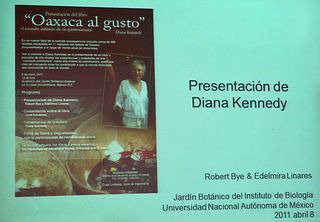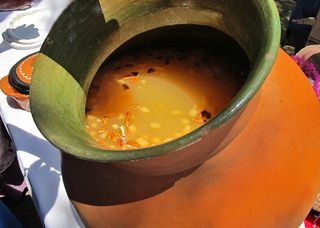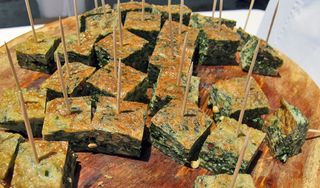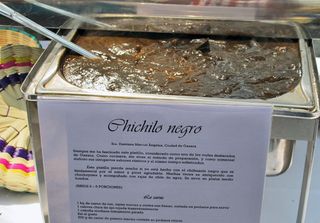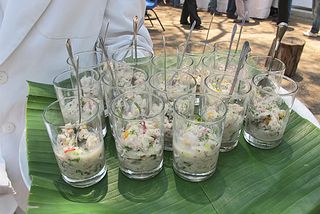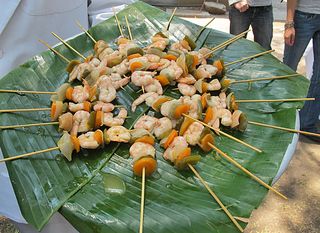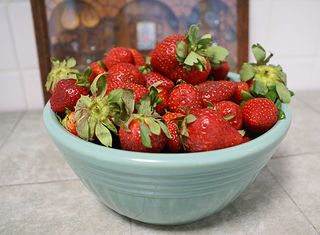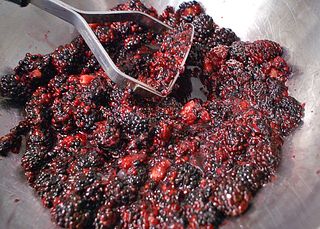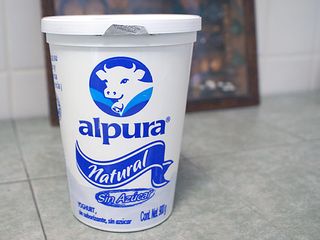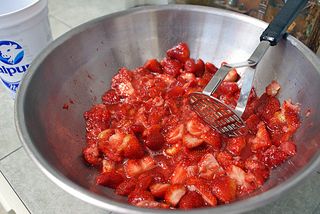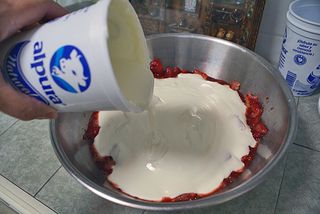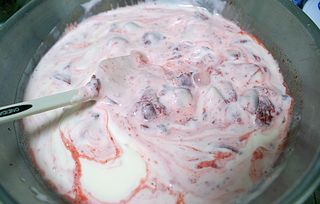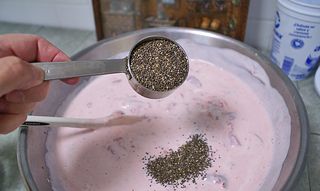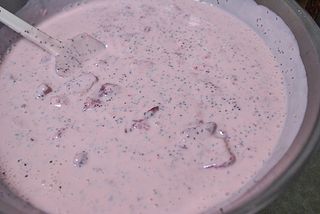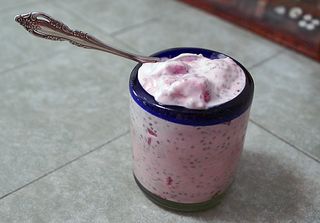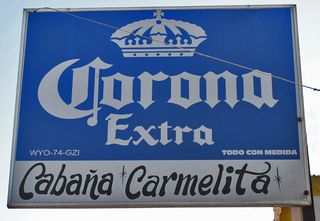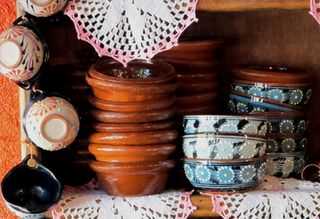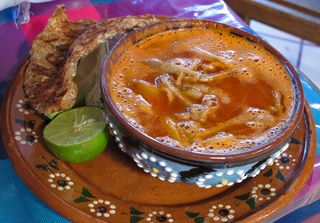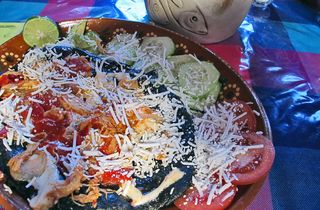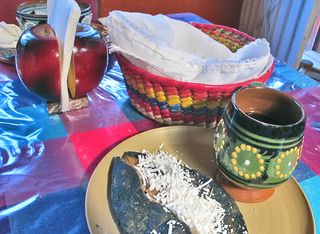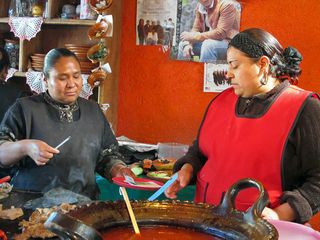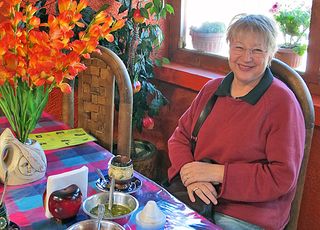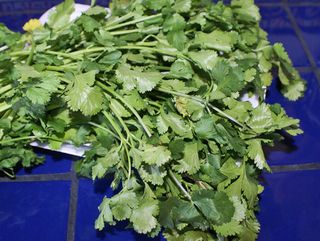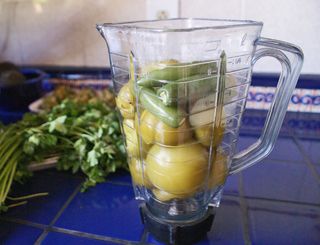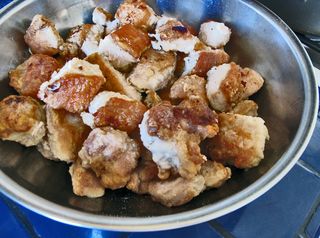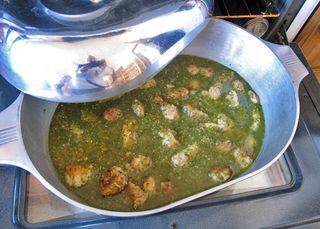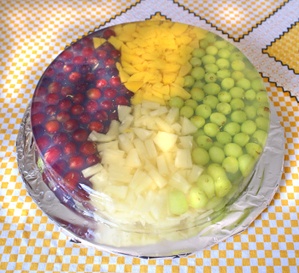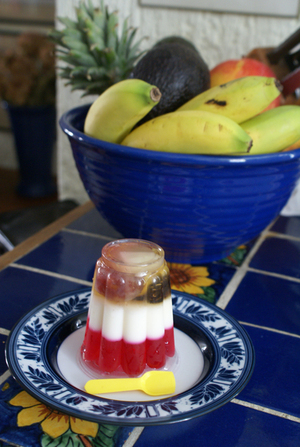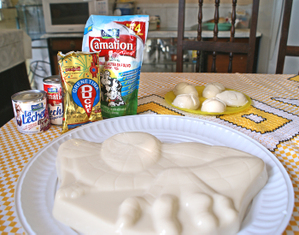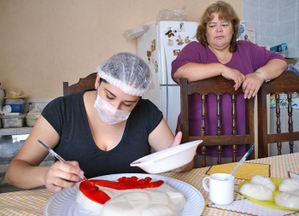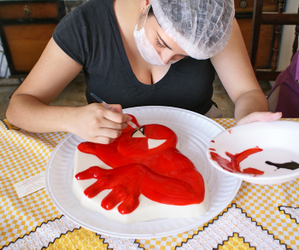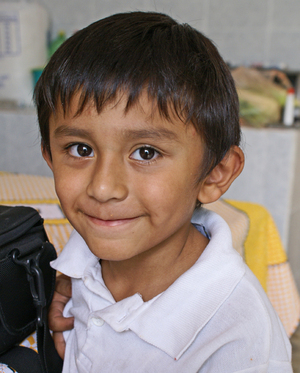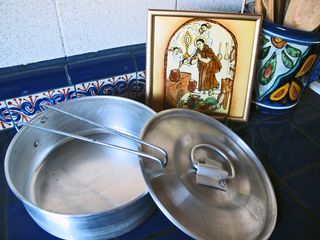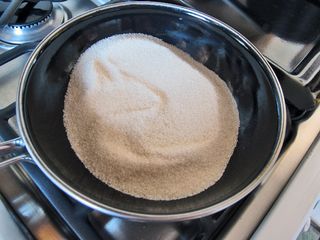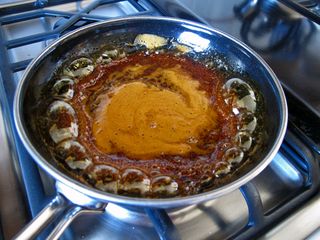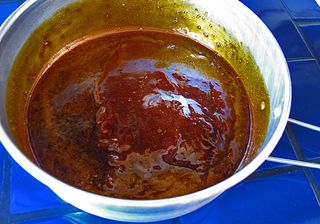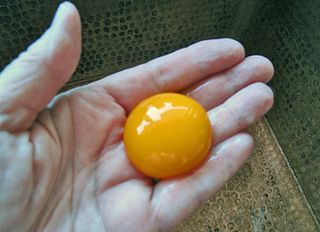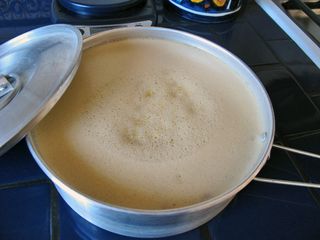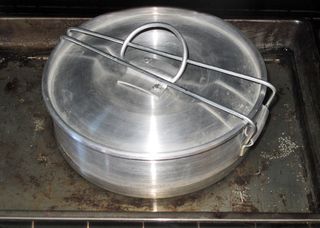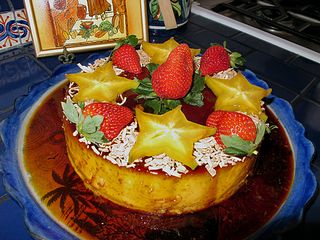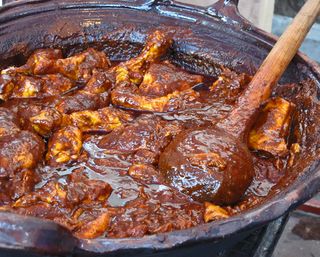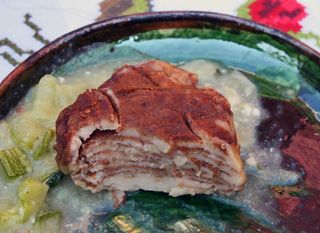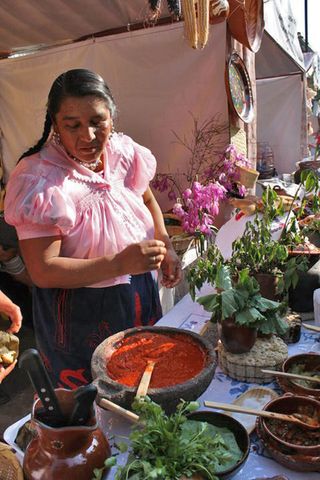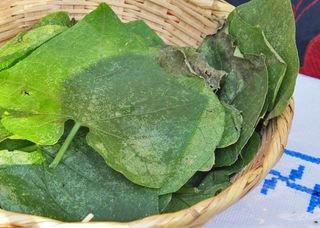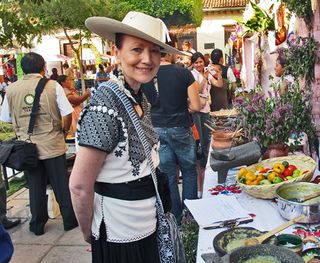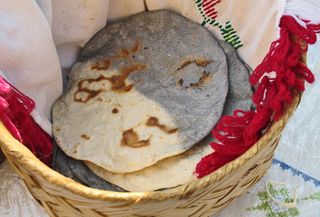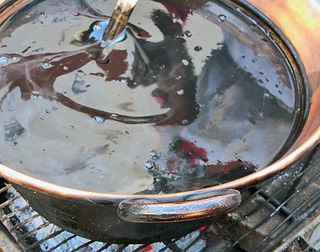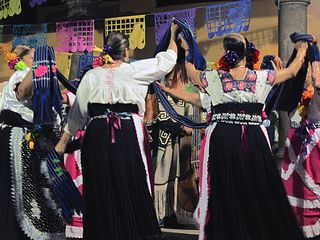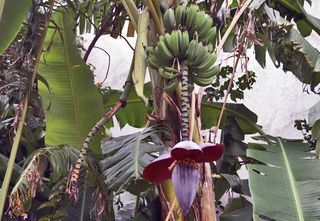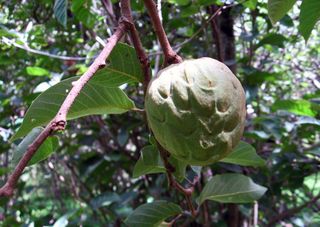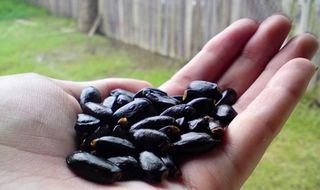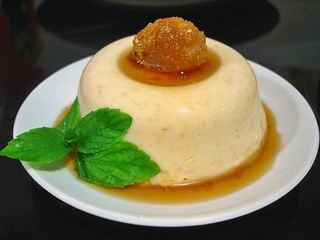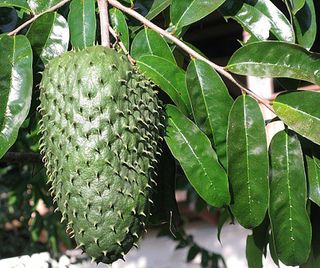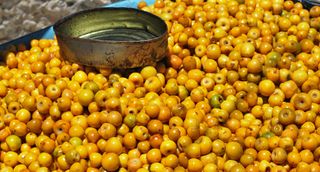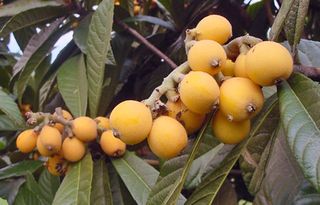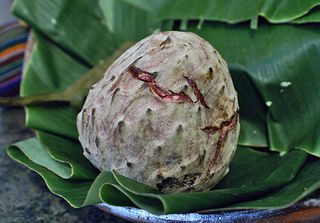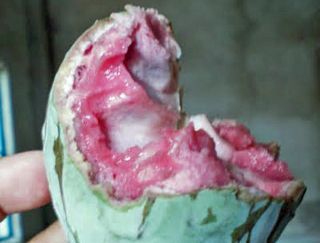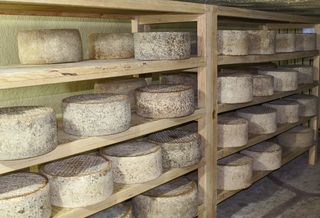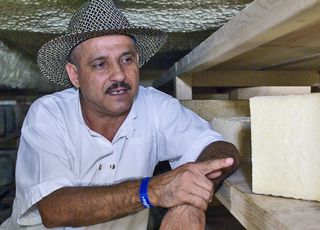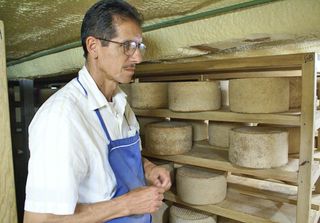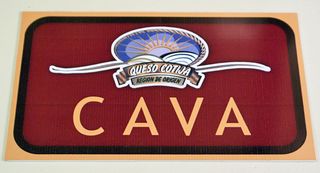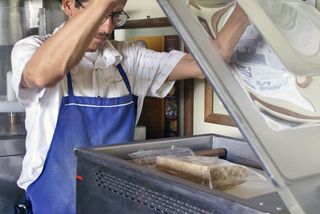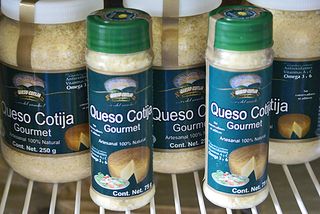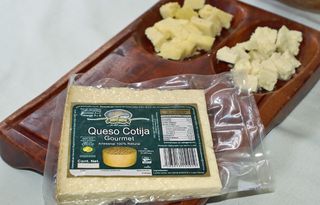
Piled high in every town's market, locally grown strawberries sell all year 'round in parts of Michoacán, Guanajuato, and Jalisco. Mexico Cooks! photographed these at a daily market in Pátzcuaro, Michoacán.
Right about now, bounty from South of the Border is available on your supermarket shelves. Fresh red strawberries, grown from Zamora, Michoacán to Irapuato, Guanajuato, will give you the sweet taste of Mexico's sun and warmth. Fresh raspberries grow near the shores of Lake Chapala, while big-as-the-end-of-your-thumb, sweet, delicious blackberries grow locally in Mexico Cooks!' region of Michoacán.
When you go to your local super market, take a closer look at those clear plastic containers (known in the trade as clamshells) full of red raspberries, strawberries, and blackberries. In the small print on the Driscoll label it says "Product of Mexico". When I still lived in the States, I read that label and imagined a gleaming white-tile packing factory. In my mind's eye, I saw employees in starched laboratory jackets, nurse-like white caps and latex gloves, packing strawberries as the jewel-red fruit came flying down an assembly line. It was a fantasy worthy of Lucy and Ethel at the chocolate factory in that famous episode of I Love Lucy.
The first time I visited a nearby raspberry "packing factory" , I had to laugh at my own earlier ideas. This packing operation was perfectly Mexican. Several clean-cut young men with bandannas wrapped around their heads roamed up and down the rows between lush raspberry canes. They hand-picked only the reddest, ripest raspberries and gently placed them into small plastic buckets, the kind five-year-olds use at the beach.

Two young women dressed in blue jeans and caps stood at a long folding table (the kind you'd find at a swap meet) and packed those perfectly ripe raspberries into flat after flat of Driscoll clamshells. They packed the plastic boxes into case after case for shipping and then rapidly started packing more.
Within 24 hours of picking, those berries are in the United States, either in Miami or Los Angeles. A day later, they are shipped out to stores across the United States. In addition, red raspberries from the shores of Lake Chapala are shipped not only to the United States but also to Canada, to England, to all parts of Europe, and to Japan.
The half pint boxes sell for about $4.99 the box in grocery stores north of the Mexican border.
Remember that raspberries are the most delicate fruits in the vast berry family. Treat them with the softest touch, just like handling like a newborn baby. Wash them gently (never allowing them to soak) just before you serve them.
I often prepare this wonderful recipe for guests. Not one single forkful is ever left over.
Raspberry Rosemary Sauce on Pork Medallions
1 medium or large orange
2 teaspoons vegetable oil
1/3 cup finely chopped onion or shallots
1/3 cup finely chopped carrot (1 small carrot)
1 large clove garlic, minced
1 1/4 teaspoons dried rosemary leaves, crushed
1/4 teaspoon dried thyme leaves, crushed
1 small bay leaf
1 package (6 ounces) red raspberries, divided
1/2 cup white wine
1 1/4 cups chicken broth
4 boneless center-cut pork chops
1 tablespoon vegetable oil
1/4 cup flour
Shredded green scallion tops for garnish
Pre-heat oven to 350 degrees Fahrenheit.
Sauce:
Using a vegetable peeler or zester, cut eight to ten thin strips from only the outer orange portion of orange peel and reserve. Squeeze the juice from the orange, reserving 1/4 cup juice.
Heat the two teaspoons oil in a medium saucepan over medium heat. Add onion, carrot, garlic, orange peel and herbs. Cook, stirring occasionally, until vegetables are lightly brown and wilted, about five minutes. Add 1/4 cup of the raspberries, the reserved 1/4 cup orange juice and the white wine.
Increase heat to high and bring mixture to a boil. Boil, stirring occasionally, until mixture is reduced to about two tablespoons (about eight to ten minutes). Add chicken broth. Bring mixture to a boil again. Reduce heat and simmer for five minutes. Turn off heat and set sauce aside.
Note: Sauce can be prepared ahead of time to this stage. Cover and refrigerate until ready to finish.
Pork Medallions:
Pat pork dry with paper towels. In a large, oven-proof skillet, heat the 1 tablespoon oil over high heat. While oil is heating, dust the pork evenly on both sides with flour, patting off any excess. When the oil is very hot, add pork medallions and cook until well-browned on the first side, about three minutes. Turn the medallions over, place the skillet in the preheated oven and cook until pork is just cooked through, this will be quick, only about six to seven minutes.
Remove medallions to heatproof platter or serving plate, cover loosely with aluminum foil and keep warm while finishing sauce.
Strain the sauce back into the same skillet in which the pork was cooked, pressing the solids through the strainer with the back of a spoon. Add any juices that may have collected on the serving platter. Over high heat, bring the mixture in the skillet to a boil. Continue to boil, stirring occasionally, until lightly thickened, about six to eight minutes. Taste and season with salt and pepper, if desired.
Spoon a tablespoon of the sauce in the center of each of the four warmed dinner plates. Place each pork medallion on top of the sauce. Top with one tablespoon sauce, about two tablespoons raspberries and a few strips of diagonally shredded green onion tops. Serve at once.
Makes four servings.
In case any of you might have health concerns about Mexican-grown produce, here's what the Driscoll people themselves say about the safety of their raspberries and strawberries:
"Driscoll's farmers have been leaders in the practice of Integrated Pest Management (IPM) which relies on a balanced method of natural and inorganic means to reduce disease and control pests in the field. To insure that Driscoll's fruit is the safest possible, Driscoll's employs a company which conducts third-party independent residue testing of fruit in every Driscoll cooler and facility every week."

These fields in the state of Jalisco are Mexican owned and leased to Driscoll solely for growing raspberries and strawberries. The raspberry crop is rotated annually and the packing operation is moved each year to the fields most convenient to the highway.
Far-flung fields of Driscoll's other delicious crop—strawberries–are in Zamora, Michoacán and Irapuato, Guanajuato (which calls itself the Strawberry Capital of the World). Red jewels lie close to the ground, nestled in dark green leaves. The strawberries are ripe and luscious this time of year, ready to be hand picked, packed, chilled, and shipped to all parts of the world. You'll find them, packaged in clear plastic one-pound boxes so you can see exactly what you're choosing, in the produce section of your favorite hometown supermarket. North of the border, the boxes sell for about $2.50 US in season. Here in Mexico, we're paying closer to the peso equivalent of $2.00 US per kilo (2.2 pounds).

Strawberry stands dot the roads leading into and out of Irapuato, Guanajuato. The stands offer tall wicker baskets filled with sweet, delicious fresh berries as well as frozen strawberries with cream, just ready to dig in.
These are not those huge strawberries grown more for looks than for flavor. Is there anything more disappointing than biting into a beautiful berry and finding it white in the middle, dry, hard and tasteless? These berries are mid-size and grown for their sweet taste—the best possible flavor—as well as beauty. Ripened more fully prior to picking than those grown elsewhere, these local strawberries are simply perfect.
Always refrigerate berries immediately—move them from the shopping bag to the refrigerator. Temperatures between 34 and 38 degrees F are best, but be sure not to freeze them! Fresh berries are very sensitive to freeze damage. Remember this general rule: for every hour your berries are away from refrigeration, you'll lose a whole day's shelf life.
Do not wash your berries until you are ready to prepare and eat them. Moisture will hasten decay of these fragile berries, so keep them dry as well as cold until the last moment.
Shelf life varies between berries; however, under ideal conditions, strawberries should keep for about two to five days in your refrigerator and raspberries should keep for between one and three days. For best results, consume your berries as soon after purchase as possible.

Are you drooling yet? Let's look at more wonderful recipes for raspberry and strawberry treats.
White Chocolate Raspberry Cheesecake
For the ultimate in red raspberry decadence, try this cheesecake.
18 vanilla wafer cookies
1 cup macadamia nuts, toasted
4 1/2 tablespoons butter, melted
4 ounces white chocolate, chopped
16 ounces cream cheese, at room temperature
2/3 cup sugar
2 teaspoons vanilla extract
1/2 teaspoons lemon juice
2 large eggs
3/4 cup fresh raspberries
8 ounces sour cream
3 tablespoons sugar
1/2 teaspoon vanilla
Crust:
Preheat oven to 350 degrees F. Finely grind cookies and macadamias in food processor. Add butter and blend until mixture forms very moist crumbs. Press crumbs firmly onto bottom and part of sides of an eight inch spring-form pan. Bake until golden (10 minutes).
Filling:
Melt white chocolate in microwave, (about 1 1/2 minutes), stopping every 30 seconds to stir and to make sure it doesn't burn. Set aside. In a large bowl, use your electric mixer to beat cream cheese, sugar, vanilla extract, and lemon juice until smooth. Add eggs, one at a time, beating after each addition, just until combined. Beat in white chocolate.
Spoon half the batter into the crust. Top with berries. Top with remaining batter. Bake for about 45 minutes or until cake is set around the edges, but center jiggles slightly.
Let cool for about 20 minutes before adding the topping.
Topping:
In a medium bowl, whisk sour cream, sugar, and vanilla. Spoon over cake, spreading the topping to the edge of the pan. Bake five minutes. Allow cake to cool and then refrigerate overnight. Serve plain or garnish with more berries.
Here are a few tips for handling red raspberries, whether you buy them at a strawberry farm or in your North of the Border supermarket.
If you want to freeze red raspberries, spread them out in a single layer on a cookie sheet with sides and place the uncovered cookie sheet in the freezer. After the raspberries are well frozen, shake them gently into a zip-lock bag and immediately put them back in the freezer. Your raspberries, whole and beautiful, will be ready for immediate use when you need them.
Try the following recipe when you want to serve an unusual fruit treat for a Sunday party brunch. Your guests will love the refreshing berries in a very unusual dressing.
Ginger Strawberries Estilo Mexico Cooks!
This recipe is served cold with a hint of spicy ginger tang and always makes a hit at brunch.
2 pounds fresh ripe strawberries
1 orange
2 tablespoons pickled ginger, drained
1 cup unflavored yogurt
2 tablespoons orange marmalade
2 tablespoons sugar or 2 packets artificial sweetener
1/4 teaspoon salt
Remove green caps from strawberries and wash gently. Pat dry in a large terry cloth towel. Cut the strawberries in half and place in a large mixing bowl.
With a vegetable peeler or zester, cut thin strips of orange peel (orange part only). Cut the orange peel strips into tiny matchstick-size strips, no longer than 1" and no wider than 1/16".
Cut the pickled ginger to the same size as the orange strips. Mix the ginger and the orange strips together.
Add the ginger and orange strips mixture, orange marmalade, sugar (or artificial sweetener) and salt to the yogurt. Stir until well-mixed.
Pour yogurt mixture over strawberries and stir gently to coat all the strawberries.
Refrigerate until well chilled. Serve.
Bringing fresh, ripe strawberries home from the field (or from the tianguis) is tricky. It's a good practice to take a wicker basket or plastic container with you to put your strawberries in for their trip home; like raspberries, they are easily smashed and deteriorate quickly under their own weight in a plastic bag.
If you buy either raspberries or strawberries in plastic clamshells, save a clamshell or two for times when you might go to a pick-your-own farm to protect the berries on the trip home. Bring your strawberries home in the clamshells. You'll be glad you did, when you realize your freshly picked berries will arrive home in perfect condition.
Here are some interesting statistics about strawberries: Canada imports all of its fresh strawberries from either the United States or from Mexico. The United States is the major importer of Mexican fresh strawberries. Under NAFTA (the North American Free Trade Agreement), duty is no longer charged on strawberry exports to either the USA or Canada.

Last, but certainly not least, let's toast our local strawberries with a refreshing and beautiful strawberry margarita.
Strawberry Margaritas
The jewel of the season: try Mexico Cooks!' fresh strawberry margarita recipe!
For two:
10 to 12 ripe strawberries
2 cups ice
2/3 cup prepared margarita mixer
1 tablespoon orange juice concentrate, thawed
2 teaspoons fresh key lime juice
Whole strawberries (for garnish)
Put strawberries in a blender with the ice, margarita mixer, orange juice concentrate and lime juice. Blend until smooth and slushy. Pour into two glasses and garnish with whole strawberries, if desired.
Buen provecho!
Looking for a tailored-to-your-interests specialized tour in Mexico? Click here: Tours.

